specified at TJ = –40°C to
+150°C, VIN = 13.5 V, IOUT = 100 µA, COUT = 2.2
µF, 1 mΩ < COUT ESR < 2 Ω, CIN = 1 µF, and
VEN = 2 V (unless otherwise
noted)
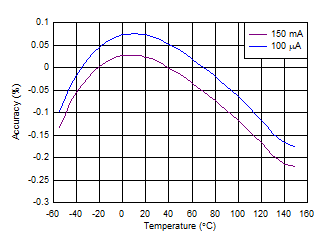 Figure 6-1 Accuracy vs
Temperature
Figure 6-1 Accuracy vs
Temperature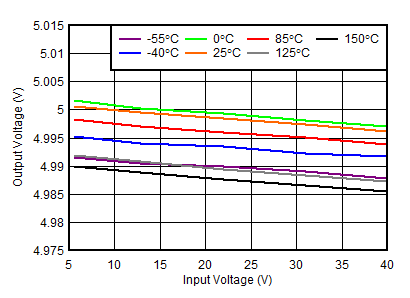 Figure 6-3 Line
Regulation vs VIN
Figure 6-3 Line
Regulation vs VIN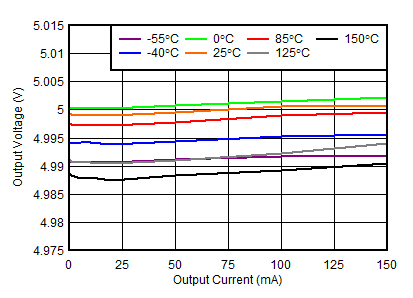 Figure 6-5 Load Regulation vs
IOUT
Figure 6-5 Load Regulation vs
IOUT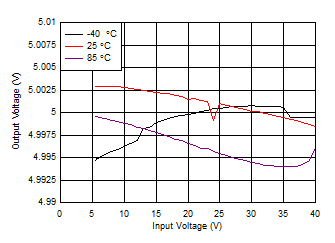 Figure 6-7 Line Regulation at 100
mA
Figure 6-7 Line Regulation at 100
mA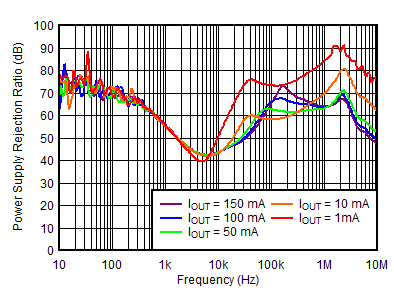
| COUT = 10 µF (X7R 50 V), VOUT
= 5 V |
Figure 6-9 PSRR vs Frequency and
IOUT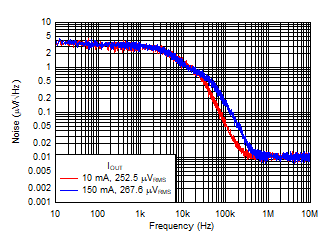
| VOUT = 3.3 V, COUT = 10
µF |
Figure 6-11 Noise vs Frequency at 3.3
V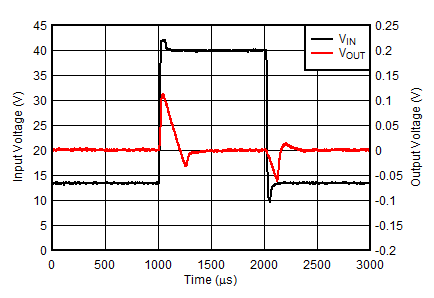
VOUT = 5 V, IOUT = 1 mA,
VIN = 13.5 V to 40 V,
slew rate = 2.7 V/µs,
VEN = 3.3 V, COUT = 10
µF |
Figure 6-13 Line Transients at 13.5 V
to 40 V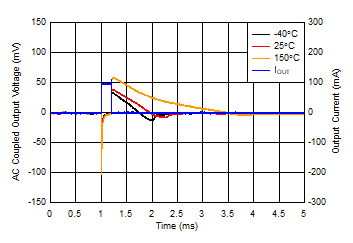
VOUT = 5 V, IOUT = 0 mA to
100 mA, slew rate = 1 A/µs,
VEN = 3.3 V, COUT = 10
µF |
Figure 6-15 Load Transient, No Load to
100 mA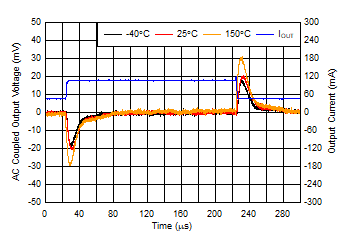
VOUT = 5 V, IOUT = 45 mA to
105 mA, slew rate = 0.1 A/µs,
VEN = 3.3 V,
COUT = 10 µF |
Figure 6-17 Load Transient, 45 mA to
105 mA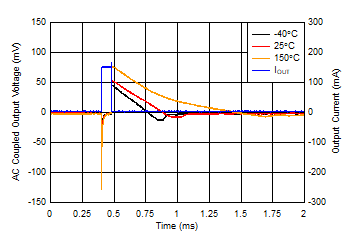
VOUT = 5 V, IOUT = 0 mA to
150 mA, slew rate = 1 A/µs,
VEN = 3.3 V, COUT = 10
µF |
Figure 6-19 Load
Transient, No Load to 150 mA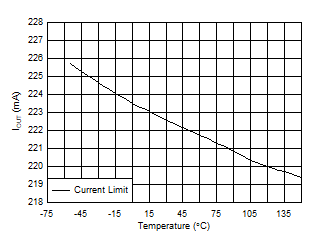
| VIN = VOUT + 1 V,
VOUT = 90% × VOUT(NOM) |
| |
Figure 6-21 Output Current Limit vs
Temperature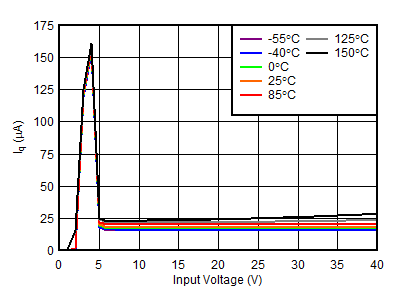 Figure 6-23 Quiescent Current (IQ) vs VIN
Figure 6-23 Quiescent Current (IQ) vs VIN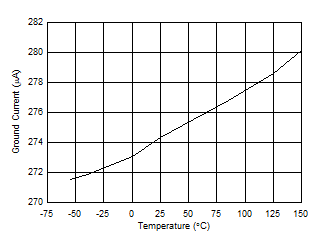 Figure 6-25 Ground Current
Figure 6-25 Ground Current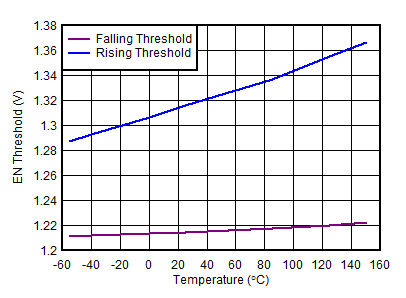 Figure 6-27 EN Threshold vs
Temperature
Figure 6-27 EN Threshold vs
Temperature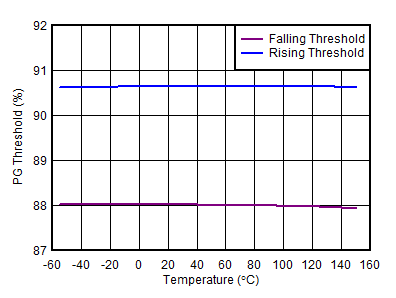 Figure 6-29 PG Threshold vs
Temperature
Figure 6-29 PG Threshold vs
Temperature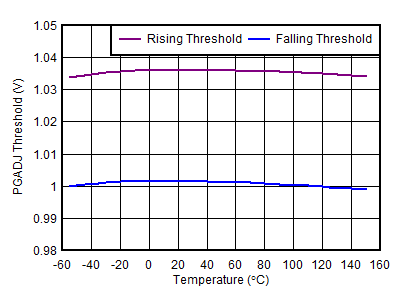 Figure 6-31 PGADJ
Threshold vs Temperature
Figure 6-31 PGADJ
Threshold vs Temperature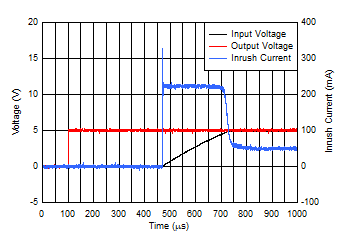
| VIN = 13.5 V, COUT = 10
µF |
Figure 6-33 Startup Plot With
EN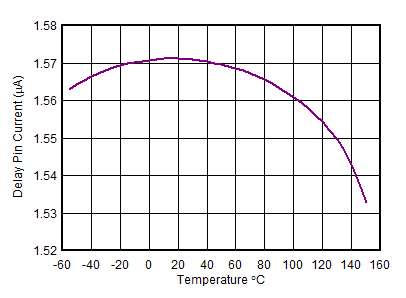 Figure 6-35 Delay
Pin Current vs Temperature
Figure 6-35 Delay
Pin Current vs Temperature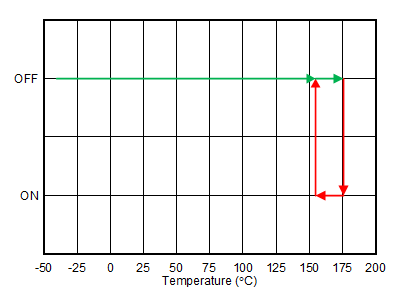 Figure 6-37 Thermal Shutdown
Figure 6-37 Thermal Shutdown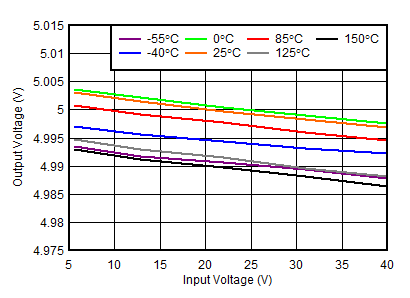
| VOUT = 5 V, IOUT = 150
mA |
Figure 6-2 Line Regulation vs
VIN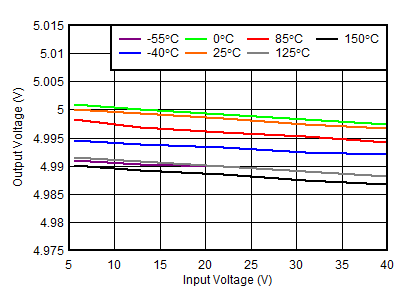 Figure 6-4 Line
Regulation vs VIN
Figure 6-4 Line
Regulation vs VIN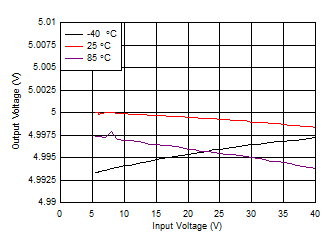 Figure 6-6 Line Regulation at 50
mA
Figure 6-6 Line Regulation at 50
mA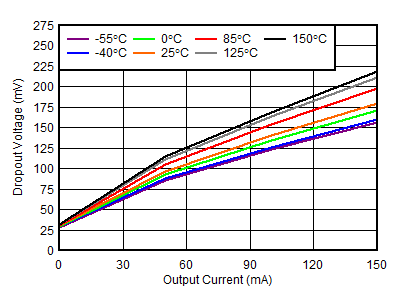 Figure 6-8 Dropout Voltage
(VDO) vs IOUT
Figure 6-8 Dropout Voltage
(VDO) vs IOUT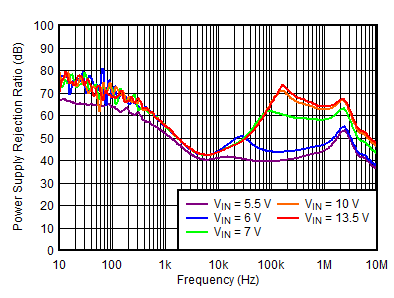
| COUT = 10 µF (X7R 50 V), IOUT
= 150 mA, VOUT = 5 V |
Figure 6-10 PSRR vs Frequency and
VIN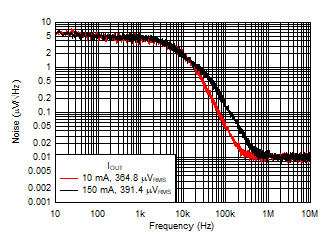 Figure 6-12 Noise vs Frequency at 5.0
V
Figure 6-12 Noise vs Frequency at 5.0
V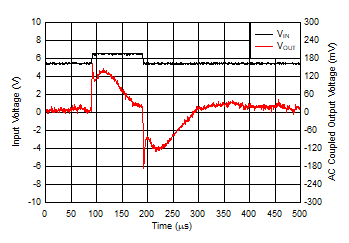
| VOUT = 5 V, VIN = 5.5 V to
6.5 V, trise = 1 µs, COUT = 10
µF |
| |
Figure 6-14 Line Transients at 5.5 V
to 6.5 V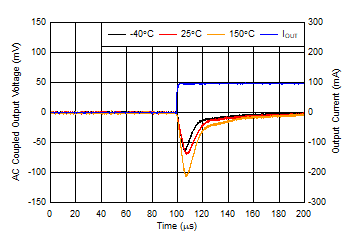
VOUT = 5 V, IOUT = 0 mA to
100 mA, slew rate = 1 A/µs,
VEN = 3.3 V, COUT = 10
µF |
Figure 6-16 Load
Transient, No Load to 100-mA Rising Edge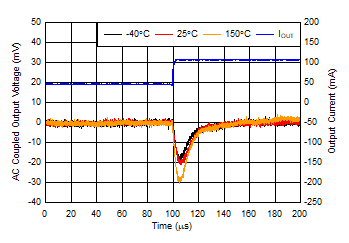
VOUT = 5 V, IOUT = 45 mA to
105 mA, slew rate = 0.1 A/µs,
VEN = 3.3 V,
COUT = 10 µF |
Figure 6-18 Load
Transient, 45-mA to 105-mA Rising Edge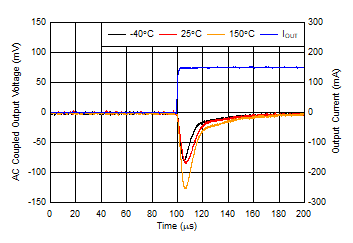
| VOUT = 5 V, IOUT = 0 mA to
150 mA, slew rate = 1 A/µs, VEN = 3.3 V,
COUT = 10 µF |
Figure 6-20 Load
Transient, No Load to 150-mA Rising Edge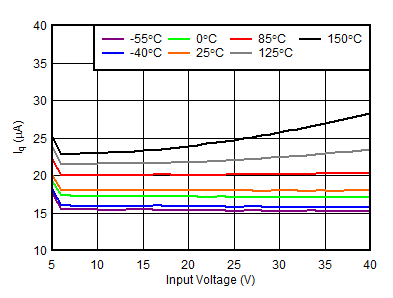 Figure 6-22 Quiescent Current
(IQ) vs VIN
Figure 6-22 Quiescent Current
(IQ) vs VIN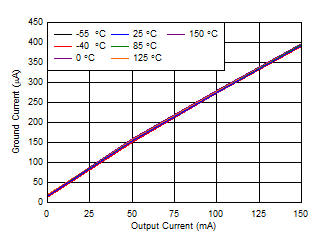 Figure 6-24 Ground Current
(IGND) vs IOUT
Figure 6-24 Ground Current
(IGND) vs IOUT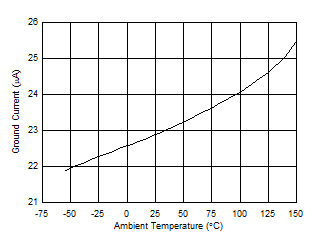 Figure 6-26 Ground Current
Figure 6-26 Ground Current 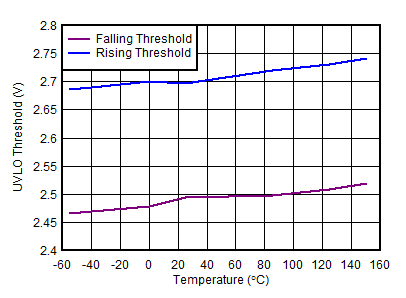 Figure 6-28 Undervoltage Lockout
(UVLO) Threshold vs Temperature
Figure 6-28 Undervoltage Lockout
(UVLO) Threshold vs Temperature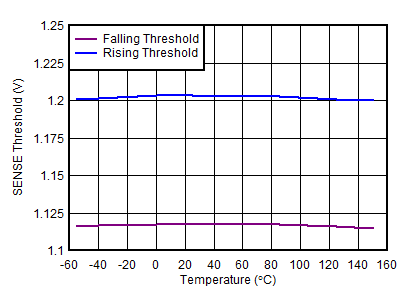 Figure 6-30 Sense Input Threshold vs
Temperature
Figure 6-30 Sense Input Threshold vs
Temperature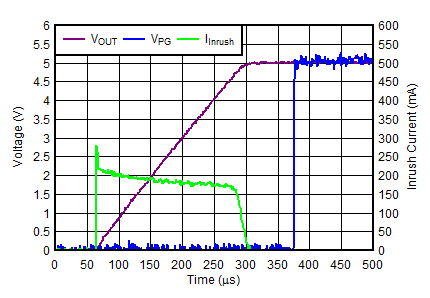 Figure 6-32 Startup Plot Inrush
Current
Figure 6-32 Startup Plot Inrush
Current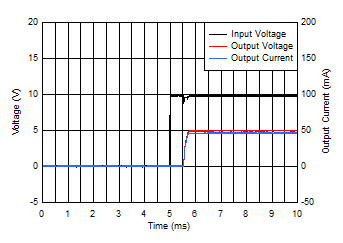 Figure 6-34 Startup Plot
Figure 6-34 Startup Plot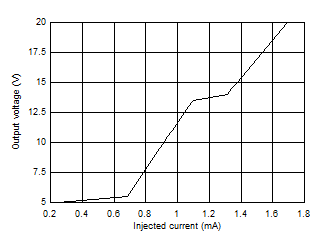 Figure 6-36 Output Voltage vs Injected
Current
Figure 6-36 Output Voltage vs Injected
Current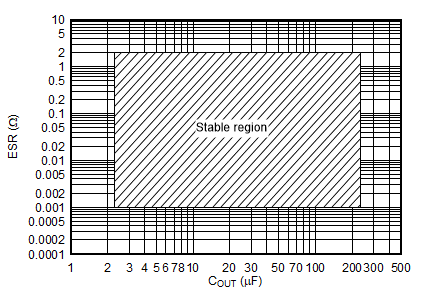 Figure 6-38 Stability ESR vs
COUT
Figure 6-38 Stability ESR vs
COUT 




































